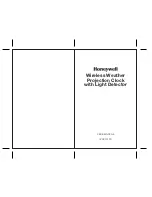
Chapter 1 Overview of the TimeProvider
Performance Monitoring
24
TimeProvider User’s Guide
097-58001-02 Revision G – April 2008
In the SSU mode, the INP1 and INP2 inputs cannot be provisioned to receive
Composite Clock (CC) signals, including JCC or JCC4. The method of selecting the
system reference is described in
Selecting the Input
, on page 35.
SUB Mode
This mode allows the TimeProvider to operate as a Remote shelf where phase is
critical. When you select the SUB mode, INP1 and INP2 are automatically set for
CC inputs (including JCC and JCC4). Outputs provisioned for CC are phase-aligned
with the selected CC input reference. Other output types comply with G.703 and
GR-1244.
To configure the TimeProvider for Subtending mode, see
Setting the System Mode
,
on page 105.
PRR Mode
In PRR mode, the GPS is automatically selected as the system reference input.
This requires that you connect a GPS signal to the TimeProvider through either:
the standalone TPIU (used with Antenna Kits 990-58545-01 or 990-58545-02) or
the integrated IMC/TPIU card (used with Antenna Kits 990-58545-03 or
990-58545-04)
This mode complies with ITU-T G.811 and Telcordia GR-2830 requirements for
Primary Reference Receivers/Clocks. Valid signals on the PRS, INP1, or INP2
connectors are used in conjunction with BesTime to extend compliance with
GR-2830/G.811 standards.
The PRR mode uses Symmetricom’s BesTime servo control that allows the
TimeProvider to continue providing outputs in case GPS tracking is lost, the GPS
data loses integrity, or if the IMC is removed from the shelf.
BesTime
, on page 43
provides more information on the BesTime technology.
To configure the TimeProvider for PRR mode, see
Setting the System Mode
, on
page 105.
Performance Monitoring
The TimeProvider can monitor and qualify all enabled input signals based on phase
measurements. It measures the phase differences between the inputs and the
output of the corrected clock. From these phase measurements, the TimeProvider
computes frequency offset and wander of the input signals. Wander is reported in
terms of Maximum Time Interval Error (MTIE) and Time Deviation (TDEV) and
creates phase, MTIE, TDEV, and Fractional Frequency Offset (FFOFF) reports.
Performance data is automatically gathered on all enabled or monitored inputs.
















































